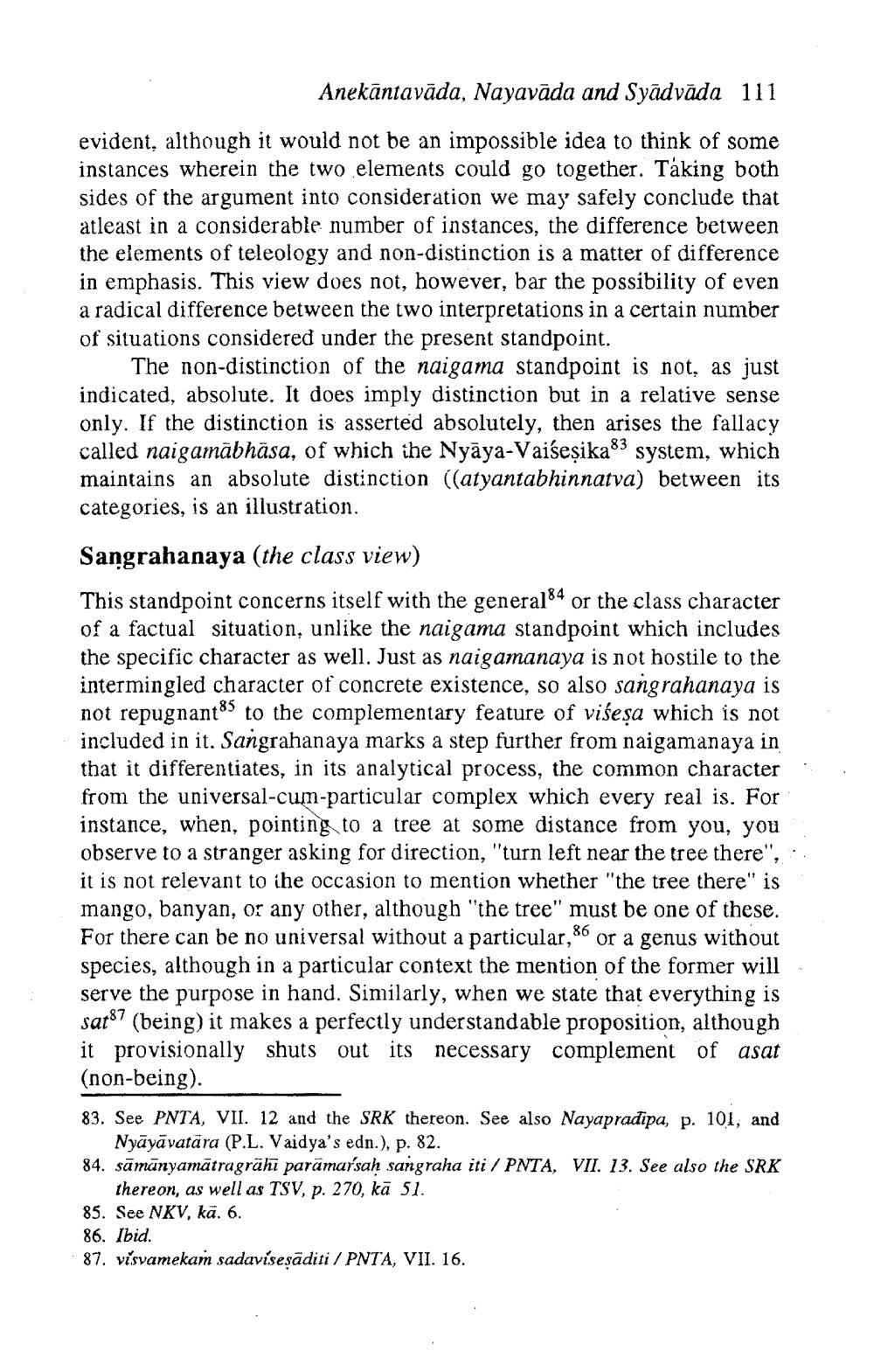________________
Anekāntavāda, Nayavāda and Syādvāda 111
evident, although it would not be an impossible idea to think of some instances wherein the two elements could go together. Taking both sides of the argument into consideration we may safely conclude that atleast in a considerable number of instances, the difference between the elements of teleology and non-distinction is a matter of difference in emphasis. This view does not, however, bar the possibility of even a radical difference between the two interpretations in a certain number of situations considered under the present standpoint.
The non-distinction of the naigama standpoint is not, as just indicated, absolute. It does imply distinction but in a relative sense only. If the distinction is asserted absolutely, then arises the fallacy called naigamabhäsa, of which the Nyāya-Vaišeşika83 system, which maintains an absolute distinction ((atyantabhinnatva) between its categories, is an illustration.
.
Sangrahanaya (the class view) This standpoint concerns itself with the general84 or the class character of a factual situation, unlike the naigama standpoint which includes the specific character as well. Just as naigamanaya is not hostile to the intermingled character of concrete existence, so also sangrahanaya is not repugnants to the complementary feature of viseșa which is not included in it. Sangrahanaya marks a step further from naigamanaya in that it differentiates, in its analytical process, the common character from the universal-cum-particular complex which every real is. For instance, when, pointing to a tree at some distance from you, you observe to a stranger asking for direction, "turn left near the tree there", ". it is not relevant to ihe occasion to mention whether "the tree there" is mango, banyan, or any other, although "the tree" must be one of these. For there can be no universal without a particular, 86 or a genus without species, although in a particular context the mention of the former will serve the purpose in hand. Similarly, when we state that everything is sar87 (being) it makes a perfectly understandable proposition, although it provisionally shuts out its necessary complement of asat (non-being). 83. See PNTA, VII. 12 and the SRK thereon. See also Nayapradipa, p. 101, and
Nyāyāvatāra (P.L. Vaidya's edn.), p. 82. 84. sāmānyamātragrähi parāmarsah sangraha iti / PNTA, VII. 13. See also the SRK
thereon, as well as TSV, p. 270, kā 51. 85. See NKV, kā. 6. 86. Ibid. 87. visvamekam sadavisesāditi / PNTA, VII. 16.




